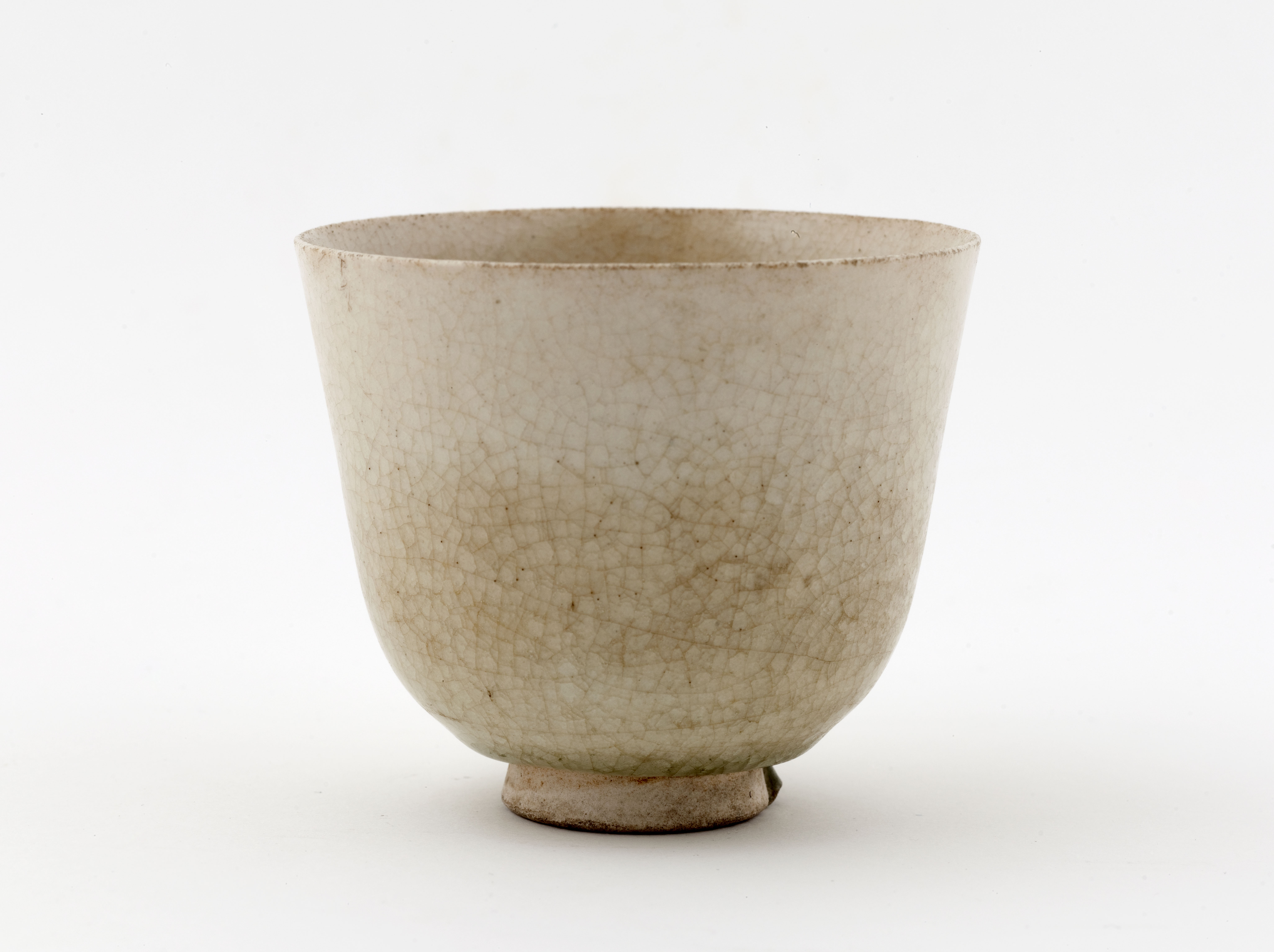
Gobelet
Porcelaine, Céramique tournée, Glaçure = Couverte
Vaisselle et ustensile de cuisine, Gobelet
Don manuel : Laveaucoupet, Paul-François de
M.C. 9551
The use of kaolin to make ceramics dates back to the Anyang phase 安陽 of the Shang dynasty 商 (13th-11th centuries BC). But because they were insufficiently fired, the vessels were very fragile and did not last for long. It was not until the 6th century AD that ceramics made with primary kaolin were developed in northern China, whose whiteness, homogeneity and translucency correspond to the Western definition of porcelain. Recent excavations of the kilns at Gongyi 鞏義 in Henan 河南 suggest that this cup dates to the early 6th century and the Northern Wei dynasty 北魏 (386-589).
This shape of cup, very popular under the Northern dynasties, originally featured incised lotus petals on the outer wall, reflecting the influence of Buddhism in all the arts. From the 6th century, these decorations disappeared and the initially squat form became taller and more slender.
These cups were produced in several centres in northern China, but the quality of this piece suggests its provenance as being the kilns at Xing 邢, on the border between the sub-prefectures of Lincheng 臨城 and Neiqiu 内丘 in southern Hebei 河北. The elegant form, thin clay and transparent green-tinged glaze are characteristic of the Sui dynasty 隋 (589-618).
